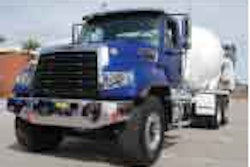Paradigm shift?

I’m not surprised that fuel prices are once again on the rise, but I didn’t expect them to jump up so soon or so severely. My instinct was that it would be another nine months to a year before we’d see gasoline and diesel prices climbing north of $4 a gallon.
But the recent political uprisings in the Middle East underscore yet again how tenuous and sensitive our oil supply is to global unrest. Most of us instinctively applaud and support democratic movements around the world, but the upheaval in Egypt and recent fighting in Libya add even more turmoil to an already unstable region and threaten to disrupt the lifeline of crude oil our country needs to fuel our economy and way of life.
Other factors play roles in the roller-coaster nature of today’s fuel prices. There are infrastructure issues, for example: If we could refine more gasoline and diesel fuel, prices would drop. And while everyone I know wants the United States to build more refineries, no one I know wants a refinery built in their neighborhood or town.
There also are seasonal issues that affect fuel prices. People drive more in the summer, so prices rise. Additionally, oil companies tweak their fuel formulas for better performance in winter and summer months, and these changes also show up on fuel bills.
The most glaring factors, however, are simple supply and demand: The grim reality is that more people around the globe want access to an already limited natural resource – thereby making crude oil more valuable and driving prices higher.
The average American screamed bloody murder when fuel prices went through the roof in 2008, but no industry suffered more than the trucking industry, which is still dealing with the economic fallout inflicted during those turbulent times. But did our industry learn anything from all that chaos?
Today’s rising fuel prices could be the last straw.
It’s true that there was a sudden interest in alternative fuels such as propane, compressed natural gas and all-electric trucks; hybrid-drive trucks also got a second look. But the reality is that when fuel prices fell back to “normal” levels, despite all the talk and interest, relatively few fleets actually committed to alt-fuel vehicles in a meaningful way; they fretted over issues such as power density, range, weight and acquisition costs, all real concerns when diesel fuel isn’t too expensive. But those reservations start to fade quickly when fuel prices reach $4.50 or $5 a gallon.
Propane and CNG lack the power density and range that gas and diesel offer, but the actual differences aren’t great – and by the way, natural gas is selling for about $2.15 a gallon today. And while CNG tanks admittedly take up valuable real estate on truck frames and add more weight to already maxed-out vehicle platforms, engineers can design around those fuel tanks, and the trucking industry could work with the government to obtain weight waivers – say, an additional 2,000 pounds – for trucks using this alternative fuel.
All-electric trucks have limited range compared to diesel or gas engines, and recharging them takes time, but their performance in urban applications is just as good as gas or diesel, and they’re cheaper to recharge and maintain. Hybrid trucks currently suffer from high acquisition costs, but tax breaks are available, and buyers eventually will recoup a return on their investment in fuel savings.
The fleets that survive and prosper in the tough times ahead will be the ones that accept the realities of today’s and tomorrow’s fuel prices, find ways to overcome the shortcomings of alt-fuel vehicles and put them to work in the real world. n
JACK ROBERTS is Executive Editor of Commercial Carrier Journal. E-mail [email protected] or call (205) 248-1358.










